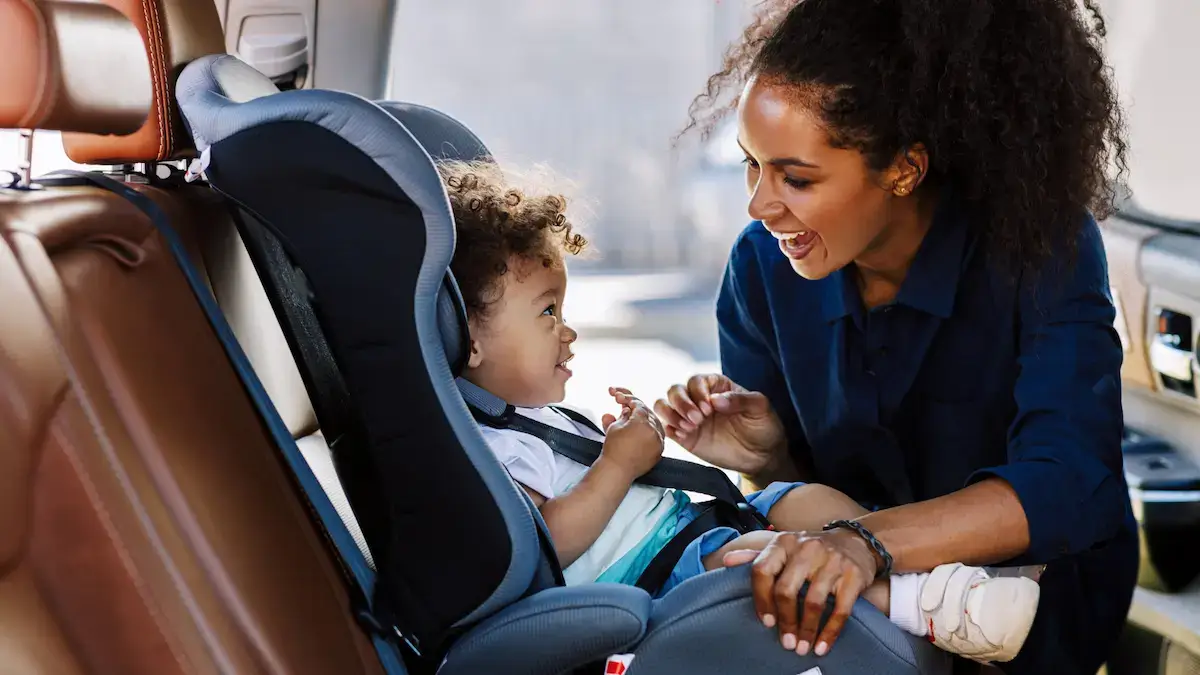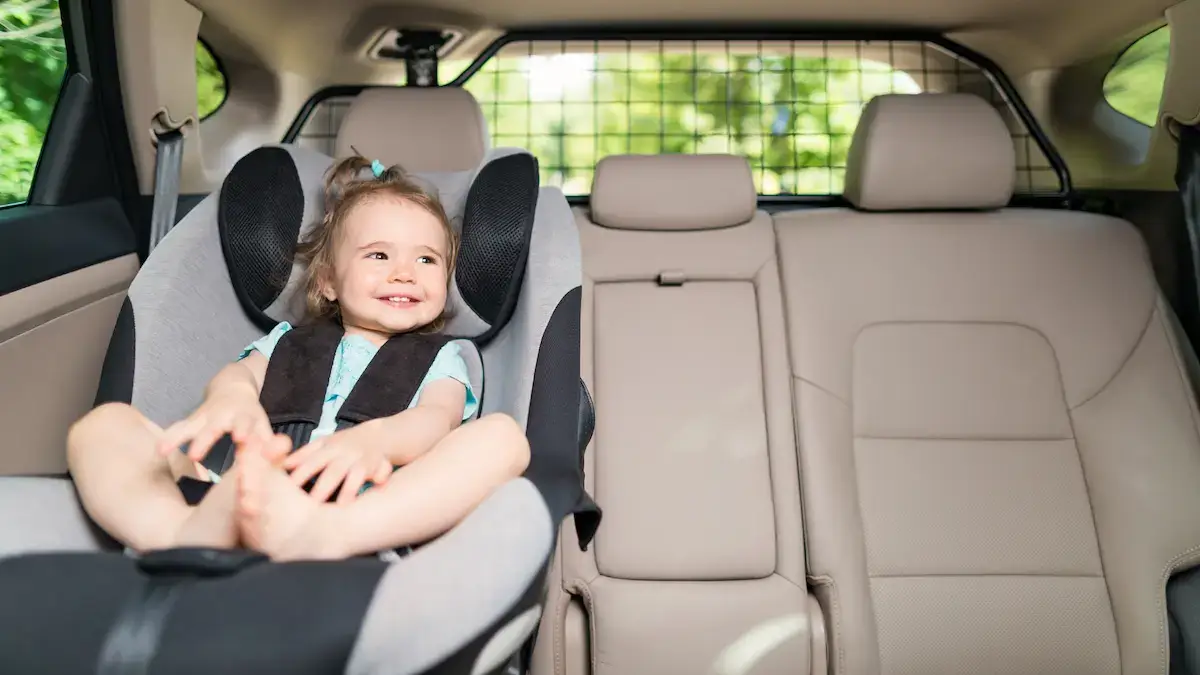For many children, long car journeys can be boring and can cause family road trips to be a stressful time for adults. These journeys can be even harder for children with autism and lead to many families feeling limited in where they can travel to and missing out on new experiences.
In this post, we will be tackling some of the most common reasons why parents say they struggle to drive long distances with their children and providing some helpful tips and tricks on how to make these trips more accessible.

Sitting for long periodS
For many autistic children, sitting for long periods can be challenging. In most situations, this can be easily resolved by the child simply standing up and moving around – however, this is not possible while driving.
Before attempting to drive with your child, it is crucial to know their tolerance for sitting. If you were only comfortable sitting for 5 minutes at a time, being strapped into a seat and unable to move for 20 minutes, would not be enjoyable for anyone. However, once you know how long your child can sit for initially, there are some tips to increase this time.
1. Sitting for an entire journey
It can be easy to assume a child’s tolerance for sitting on a chair would be the same as for sitting in a car seat, however, a chair can offer a lot more flexibility which must be considered.
When initially timing how long your child can sit for, it is important to notice how often they move in the chair or move the chair itself. When sat, many children may seek to self-comfort by pushing/pulling their chair to different positions or moving where they are sat in the chair i.e., leaning forward, sitting on the edge, slouching, or rocking themselves. Car seats and especially booster seats are very restrictive and will limit how much your child can move, which could cause distress and challenging behaviours.
If your child can sit for 10 minutes without moving, but after that begins to move around a lot even while still sitting, then 10 minutes or fewer should be the ideal beginning journey length to avoid discomfort.
2. Practising at home
An easy way to increase the length of time your child can sit is to play with certain toys and objects at a table. Finding items which your child will happily sit at a table with for a long time can be great to take in a car. Practicing sitting with these toys can get them more used to sitting for long periods and favourite toys could be reserved specially for car trips to make them even more exciting.
This sitting time can even be extended by practising adding in a delay, for example, “you need to sit still at the table for 3 minutes and then you can play with the toy for 10 minutes”. However, waiting is a skill which takes a lot of practice and would need to be gradually worked on over time.

Avoiding difficulties on the road
Dealing with challenging behaviour while driving can be stressful and potentially dangerous, putting a lot of parents off driving long distances. Aside from the length of time sitting addressed above, there are several other tips which can help to reduce the likelihood of challenging behaviours occurring.
1. Reducing hunger
A common cause for challenging behaviour is because a child is hungry and struggles to communicate their needs.
Preparing before a journey by having a filling meal can reduce the likelihood of a child being hungry, however may lead to the need for a toilet break.
Taking easily accessible snacks (pre-portioned and unwrapped) on a trip can help manage a child’s hunger in small amounts, without needing to stop or multitask.
2. Temperature
Cars can become very hot for passengers, especially in back seats where there are fewer fans and the sun may be hitting from a different angle.
Attaching sunscreens to the rear windows can help to reduce how hot passengers get and positioning car fans to be pointing into the middle or back of the car can make sure air circulates throughout.
Dressing children in lighter clothing, while providing a blanket for warmth can also let children manage their own temperature as many will struggle to remove excess clothing while strapped in.
3. Restless
If your child has lots of energy, doing some activities before a car trip can be helpful. Burning off lots of energy doing something fun can make children more than happy to sit down or even nap for a while, which is the perfect time to go on a long journey.
Frequent breaks are also recommended, stopping at service stations or other safe locations to walk around will help stop discomfort and agitation. If your child likes to play with parts of the car, taking an engaging fidget toy can also be useful to keep their hands busy.
4. Seeking attention
Driving requires a lot of attention, which can lead to children seeking the driver’s attention in inappropriate ways. In the next section, we will explore methods for children to entertain themselves, however, some ways a driver can be directly involved with a child are to play games.
If the child is able, games like “I spy” or counting specific things you can see can be a great way to focus on the road while also engaging with passengers and directing their attention away from the driver.
Having a companion sit in the back with a child can also be helpful for more intensive attention, as they are free to interact with the child in physical play without disturbing the driver.

Keeping children entertained while driving
Even when all our little one’s needs are met, long drives can still just be plain boring. Almost all adults will listen to the radio or music while driving but this isn’t always fun for children.
It is often not possible to have companions travel with children to keep them entertained and the children might not be able to play verbal games like “I spy”. However, there are a few options available to entertain children safely.
1. Screen time
Portable DVD players can be purchased cheaply and attached to the headrest of the front seats. These are out of reach of children and secured safely, allowing TV shows or films to be played for the child, without causing distraction for the driver.
This can potentially occupy a child for a long time without needing direct involvement and avoids the risk of the child dropping or pressing the wrong buttons on handheld devices.
2. Breaks
Following on from the above section, even if a child can sit for a long time, it can still be boring to do so. Planning specific stops on route with things to see or do, can help make long journeys feel like several smaller trips and make them more fun.
3. Toys
The inside of a car is a lot less stimulating than when a child is at home with all their toys. Bringing a range of toys and items to play with in a car can keep children engaged and prevent them from getting bored.
Even if a toy is their favourite, it will still get boring after a while, so having multiple options in their reach can let them change when they want and keep them entertained.

Interested in autism therapy services?
For further information on our autism therapy and education services, contact our specialist team at First Bridge. You can reach us by giving us a call on +44 (0) 20 3301 3985, or by sending us an email to admissions@firstbridgecentre.com and a member of our team will be more than happy to help.
Please don’t hesitate to contact us if you have any questions or queries regarding our services – our dedicated team is always happy to help and answer any questions that you might have.
